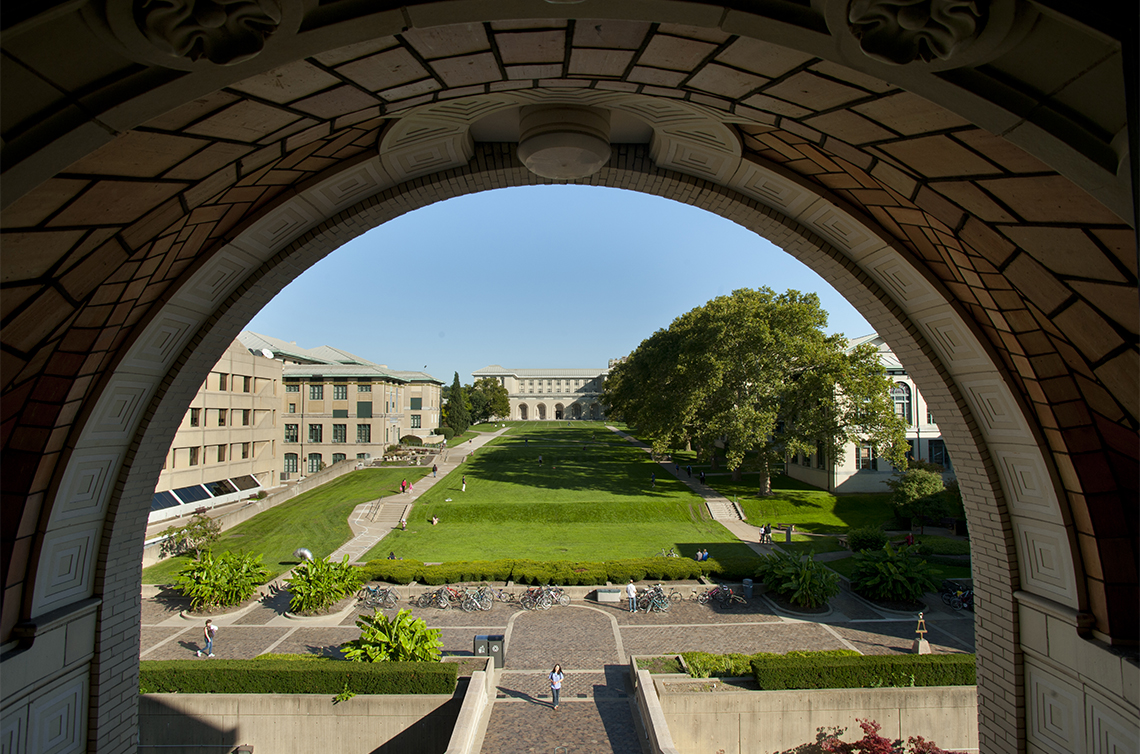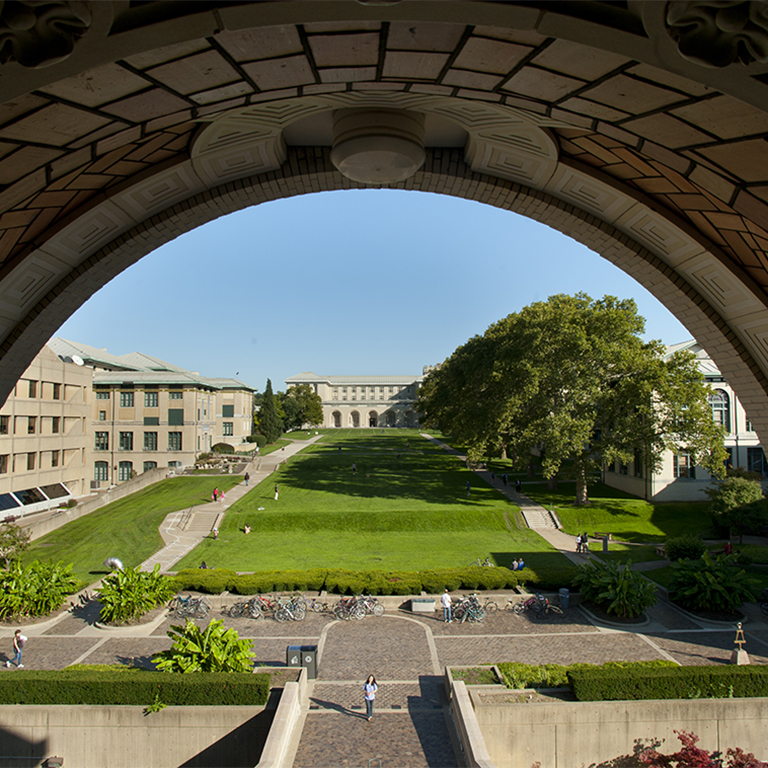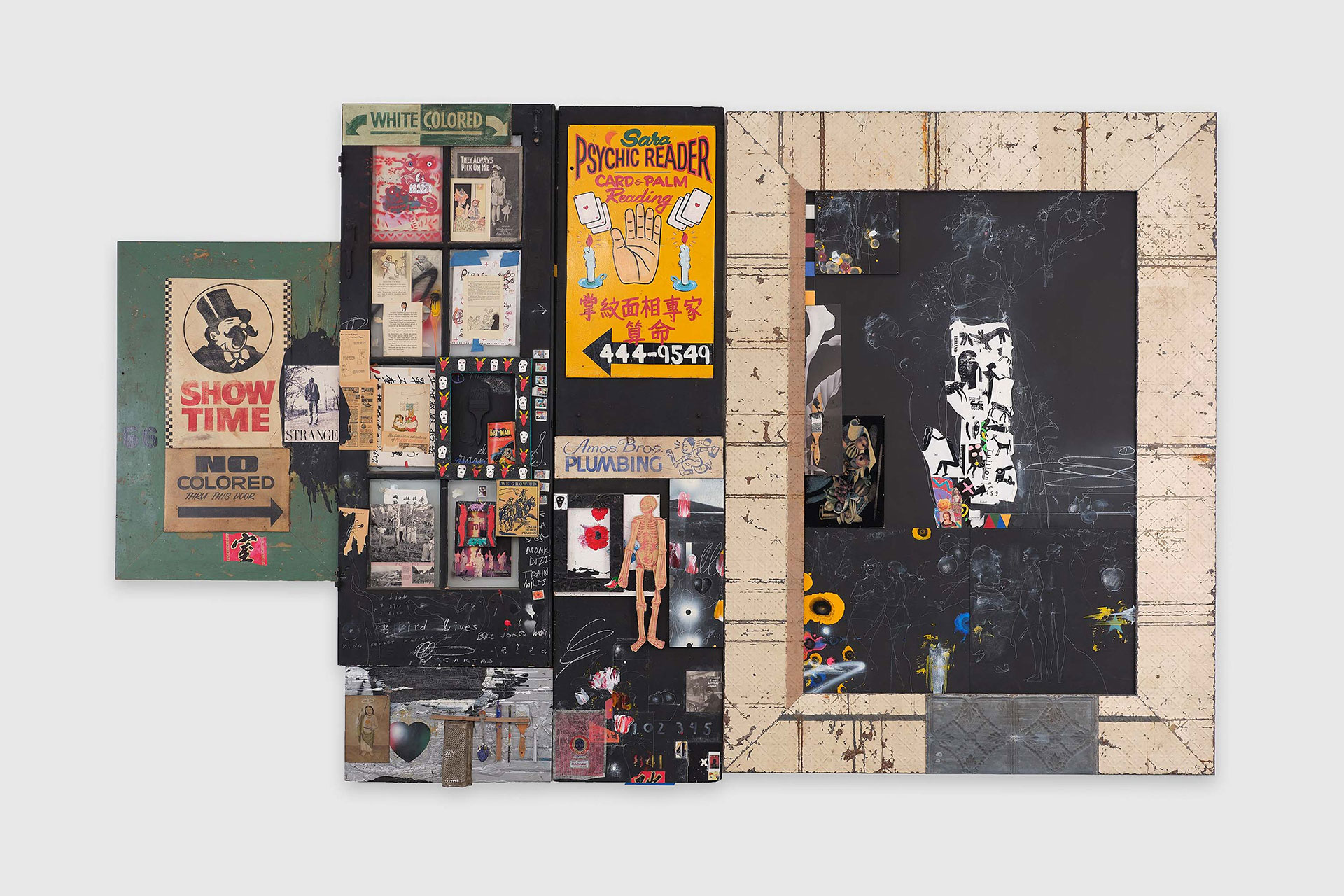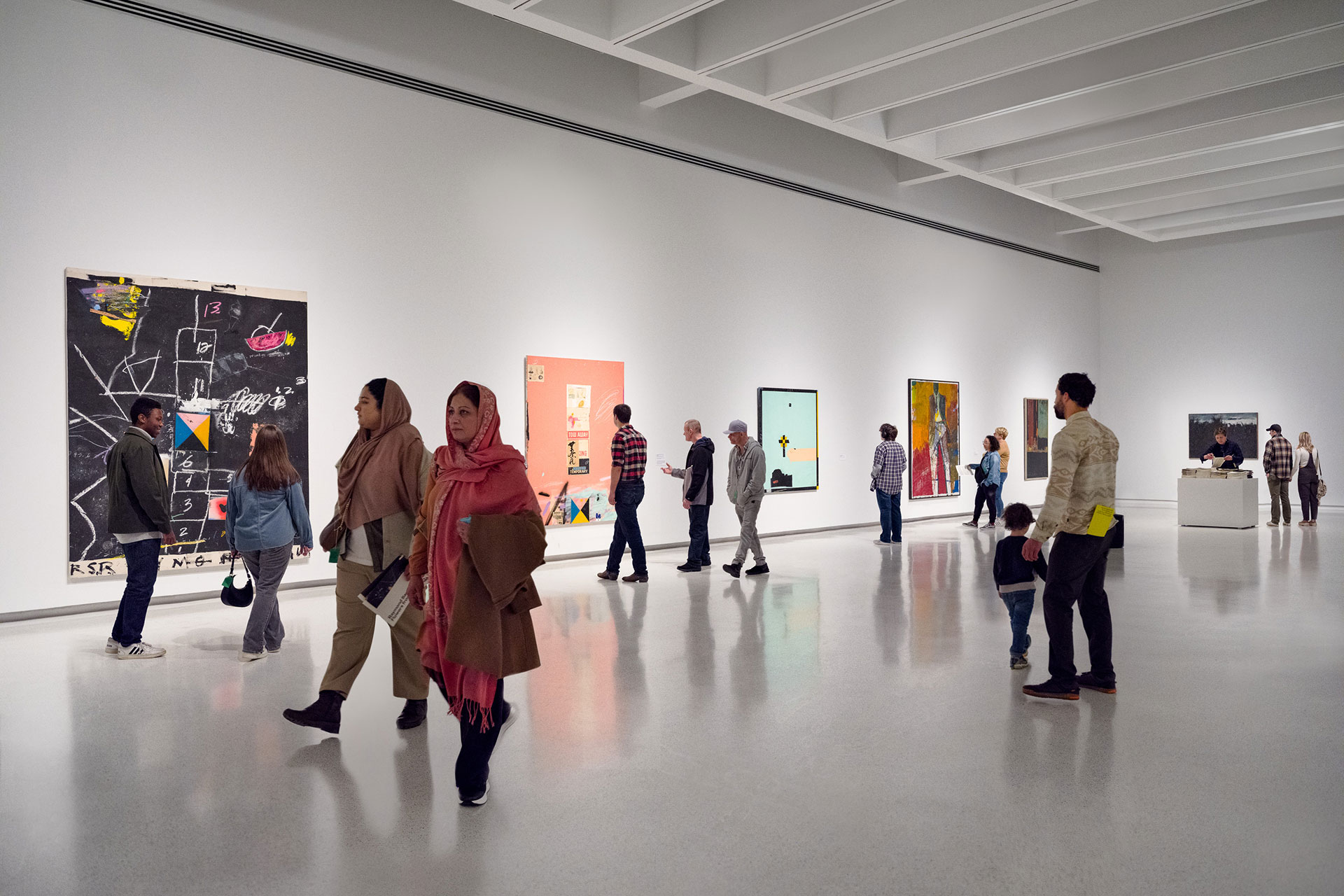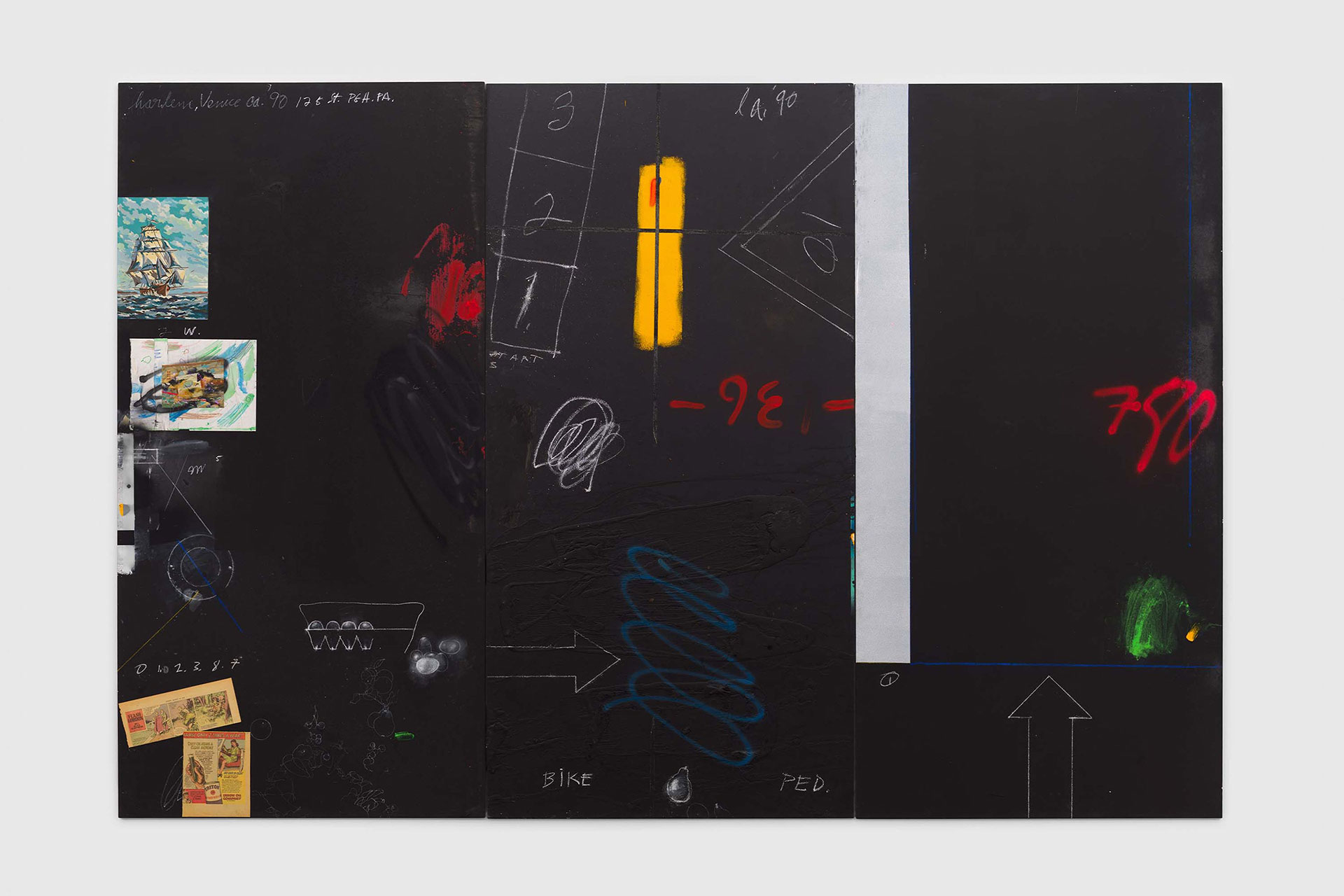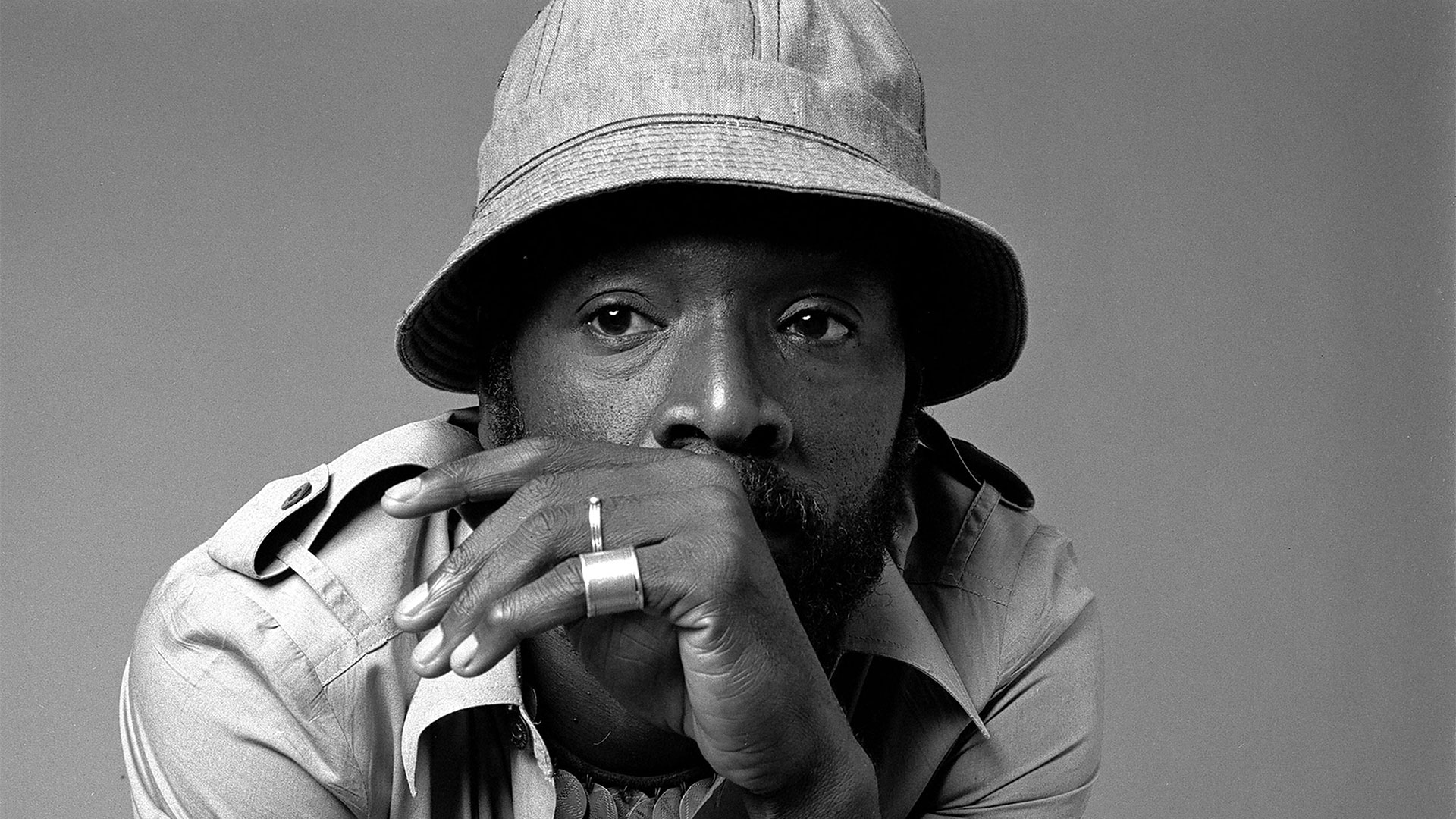
Saunders passed away at the age of 90, leaving behind a legacy defined by radical independence and an unflinching belief in the expressive power of painting.
A defining voice in American art, Raymond Saunders studied as a painter at the Carnegie Institute of Technology (now Carnegie Mellon University) and graduated in 1960. Across a six-decade career, he developed a dynamic, improvisational practice rooted in drawing, collage, assemblage, and found materials. His large-scale canvases, chalkboards, and repurposed surfaces — often unified by black grounds — vibrated with sociopolitical undertones. In his renowned 1967 pamphlet “Black Is a Color,” Saunders pushed back against the idea that Black artists must represent any one ideology or experience: “I am not responsible for anyone’s entertainment. I am responsible for being as fully myself, as man and artist, as I possibly can be, while allowing myself to hope that in the effort some light, some love, some beauty may be shed upon the world, and perhaps some inequities put right.”
In 2025, “Raymond Saunders: Flowers from a Black Garden” at the Carnegie Museum of Art marked the artist’s first solo museum exhibition since 1996 — the largest of his career and a symbolic homecoming for the Pittsburgh native. The exhibition drew wide acclaim, including from Will Heinrich in The New York Times: “Is it an undigested mass of notes and ideas, a perfectly balanced composition of colors and shapes, or a mixed-media explosion designed to knock you on your heels? Are we meant to look at the details or the whole? The answer, of course, is yes.”
Born in Pittsburgh in 1934, Saunders’s earliest art education began at the Carnegie’s Saturday morning classes for young people. Through the mentorship of Joseph C. Fitzpatrick — then Pittsburgh Public Schools’ director of art and a guiding force behind some of the city’s most celebrated artists — Saunders earned a scholarship to the Pennsylvania Academy of Fine Arts. Like other of Fitzpatrick’s protegees, including Andy Warhol, Mel Bochner, and Philip Pearlstein, Saunders went on to study at the Carnegie Institute of Technology, receiving his BFA in 1960. He completed his MFA the following year at the California College of Arts and Crafts.
Saunders began teaching in 1968 at California State University, Hayward, before returning to his alma mater (now California College of the Arts), where he taught for many years. His work has been exhibited internationally since 1952, with major institutional presentations including “Now Dig This! Art and Black Los Angeles 1960–1980” (Hammer Museum, 2011) and “Paris noir: Circulations artistiques, luttes anticoloniales 1950–2000” (Centre Pompidou, 2025). His first major museum solo show was presented by SFMOMA in 1971.
Saunders’s work is held in the collections of MoMA, the Met, the Whitney, the National Gallery of Art, Philadelphia Museum of Art, Carnegie Museum of Art, and many others. He received numerous honors throughout his life, including a Rome Prize Fellowship (1964), a Guggenheim Fellowship (1976), and two NEA awards (1977, 1984). Beginning in 2024, he was co-represented by David Zwirner, Casemore, and Andrew Kreps galleries.
“Raymond Saunders was a fearless innovator,” said Charlie White, Head of the School of Art. “As both an educator and artist, he opened new pathways for generations of artists, challenging us to confront complex histories and identities with honesty and nuance. His legacy remains a powerful reminder that art’s greatest strength lies in its ability to question, to heal, and to expand the world around us.”
Top image: Connie H. Choi, “Raymond Saunders,” in Kellie Jones, ed., Now Dig This! Art and Black Los Angeles 1960–1980. Exh. cat. (Los Angeles: Hammer Museum, University of California, Los Angeles, 2011), p. 317. Photo by Anthony Barboza/Getty Images

